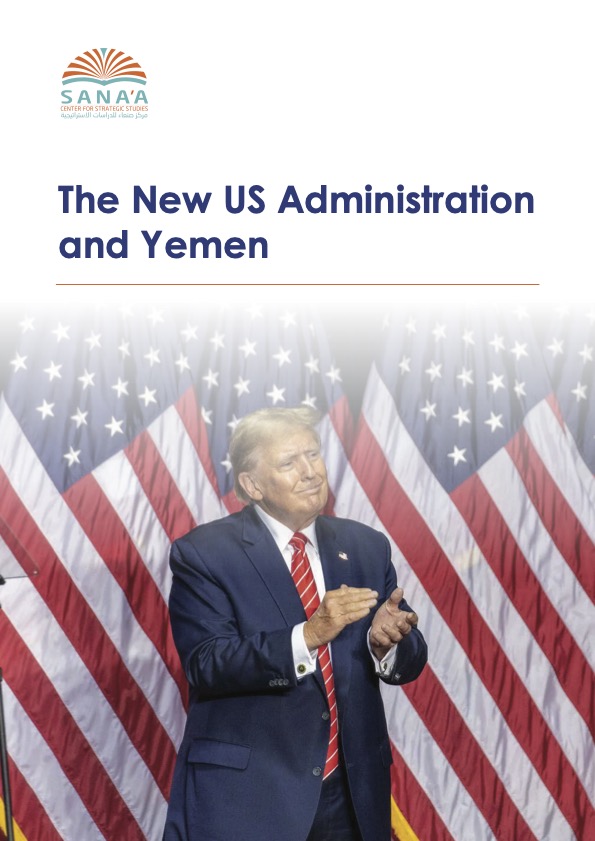The return of President Trump is now confirmed. Washington, after years of miscalculation on Yemen, must chart a new path forward to push for peace
Almost four years ago, the incoming Biden administration, deeming peace in Yemen as low-hanging fruit, declared the ending of its war to be a top priority and appointed Special Envoy Tim Lenderking, a veteran of the State Department and competent diplomat, to reap that fruit. At the start of the conflict, the US backed the Saudi-led coalition with arms, intelligence, and logistical support, before pulling back slightly as the campaign against the Houthis turned into a years-long military stalemate and a humanitarian disaster for Yemen. By early 2021, the Houthis began to advance again into government-held territory and cemented themselves as a national security threat to Saudi Arabia via continued cross-border attacks. Well-designed strategic Iranian support, which grew as the war dragged on, was helping to transform the Houthis from a backwater armed group into a regional player capable of striking Riyadh.
It was clear that the Biden team had underestimated the situation in Yemen. In particular, the US failed to appreciate one fundamental challenge to resolving the conflict: fierce competition in Yemen between America’s two major Gulf allies, Saudi Arabia and the United Arab Emirates (UAE), made it impossible to unify the command of Yemen’s internationally recognized government and present it as a credible deterrence to the Houthis. With the government so weak, the Houthis had no incentive to negotiate with them, despite renewed peace pushes by the US, UN, and other Western countries. Eventually, as the situation on the government side continued to deteriorate, the US stopped talking about solving the Yemen conflict other than bland rhetorical statements, and left it to the Saudis to handle it their way.
Saudi Arabia was not keen on a military solution to the conflict. Riyadh failed several times to provide the weapons necessary for Yemeni partners to shift the balance on the ground. The Saudis were partly concerned that the Islah-dominated government would emerge with a strong army after the war. In 2021, an Islah party leader confided to me that when they asked the Saudis for tanks and armored personnel carriers, their response was: “We will not give you weapons that you might someday use against us.” Instead, the Saudi approach shifted, seeking to strike a deal with the Houthis and prepare the government for negotiations with them to end the conflict.
As part of the efforts to solve the government’s dysfunction and prepare it for eventual peace talks, Riyadh orchestrated the replacement of former President Abdo Rabbu Mansour Hadi. The Kingdom’s clumsy attempt to reform the political leadership of Yemen’s government, however, fell flat. The PLC was and remains an amorphous construct with no clear mandate, no bylaws to govern its functions nor job descriptions for its eight members. Meanwhile, The UAE, seeing that its national security interest was enhanced by keeping Saudi Arabia stuck in the Yemeni quagmire, supported the Southern Transitional Council and other armed groups reluctant to submit to a unified leadership. While the various groups under the banner of the internationally recognized government were busy squabbling and fighting each other, the Houthis kept building their military capabilities and strengthening their hold on national institutions.
By 2022, the Saudis, eager to find a swift way out of the Yemeni predicament, started making one concession after another to the Houthis. culminating in an official visit by a Saudi delegation to Sana’a in April 2023 for bilateral talks. Despite continued Houthi intransigence, Saudi Arabia eventually managed to negotiate an outline of a deal that stipulated the cessation of hostilities, security guarantees for Saudi Arabia, and a roadmap for future Yemeni-Yemeni negotiations. But in effect, Saudi’s quest for a quick withdrawal became a surrender of Yemen to the Houthis.
Throughout these developments, the US held back. According to Western diplomat sources, the Saudis had told Washington that they could lure the Houthis to their side, just like they did with victorious Republican commanders and tribal leaders after the defeat of Saudi-supported Royalist forces in the North Yemen Civil War (1963-70), who were then put on Saudi’s payroll. Whether the US bought this absurd claim is unclear, but the US reaction suggests that the Houthi takeover was thereafter viewed as an issue that only concerned the Saudis. The Omanis, meanwhile, played mediator between the US and the Houthis, by extension their Iranian patrons, and sought to allay Washington’s concerns about the future Houthi role in Yemen and the region.
The seismic upheaval of October 7 changed everything. Emboldened, and having pulled off such remarkable concessions from the Saudis, the Houthis had no qualms in giving all that up and declaring war on Israel in support of the Palestinian resistance in Gaza. After the Houthis launched operations aiming to disrupt global shipping through the Red Sea, they were now no longer only a Saudi problem. The US found itself in the difficult position of having to deploy warships in the Red Sea to defend freedom of navigation through the vital trade waterway.
The massive cost of the US deployment, where Houthi missiles and drones costing a few thousand dollars have been met with volleys of munitions at the cost of approximately US$1 billion, on top of the limited impact of the retaliatory US-UK airstrikes against Houthi military targets in Yemen, has forced the US to rethink its overall strategy. Having realized the extent of Houthi militancy, the US has raised the bar on what needs to be achieved in Yemen. The objective, as expressed privately by US officials when addressing the topic of Houthi attacks in the Red Sea, is not only to stop the Houthis from firing missiles now, but to make sure that they cannot and will not disrupt shipping in the Red Sea ever again.
Charting A Path Forward in Yemen
The US and the international community’s options in Yemen are limited. Major military action is out of the question. The US has no appetite for another Afghanistan. Even if they get sufficient arms, military leaders on the government side cannot do much while they suffer from division, corruption, and a lack of institutional capacity. A futile military campaign would probably end up having the opposite effect – convincing the international community to accept the Houthis as the de facto rulers of Yemen, just as it did with the Taliban in Afghanistan. Thus, the political option remains the only viable one. Its premise is achieving an inclusive power-sharing agreement by all effective Yemeni actors based on local autonomy so that no party, especially the Houthis, will have to give up much of its control over the territory they hold.
Recent US diplomatic efforts to build a coalition of moderate Yemeni political parties is a positive first step, but it should only be a small component of a much larger political approach that could make a real difference. After all, Yemen’s political parties evolved in the capital of a centralized political system– they do not represent the two-thirds of the population that live in the countryside. Instead, what is needed is a broader representation that includes local authorities from across Yemen. Even with this in place, more is required to put Yemen on a path to durable stability.
To start, the Houthis have to be convinced to lower their expectations; currently, they are looking at a complete take-over of the parts of Yemen they covet through the roadmap offered to them by the Saudis. The government, on the other hand, needs to become a credible counterweight to the Houthis that can claim and maintain an equitable power-sharing agreement. Therefore, two prerequisites must be met to pave the way to a political resolution of the Yemen conflict.
The first is to strengthen the defensive capabilities of the government forces and redress the massive military power imbalance between the Houthis and the government. They need to know that the oil and gas fields in Marib and Shabwa are out of their reach. Having that deterrence, on top of a regime of sanctions that targets Houthi front companies, would be the stick. The carrot would be the reconstruction and development funding as part of a peace agreement. The second is unifying the command of the internationally recognized government and improving its governance and oversight. Reforming the PLC would be a good first step, but the key challenge is developing a unified military command. While Saudi Arabia and the UAE are still competing for influence in Yemen, the armed groups they support will never submit to such a structure, so it is key for Riyadh and Abu Dhabi to get on the same page.
Harnessing American Leverage
While these two prerequisites appear difficult to achieve, some recent developments are promising. In September, the US designated the UAE as a major defense partner. While the details of that designation are unclear, we can deduce from the experience of the one other state enjoying that designation, India, that it improves access to advanced defense technology and greater cooperation. The designation came as Saudi Arabia is negotiating dozens of security cooperation protocols with the US to elevate the US security guarantees the Kingdom has enjoyed since the Ibn Saud-Roosevelt meeting in 1945. Heightened security arrangements for both states give Washington more leverage to push for greater cooperation in unifying the command of the government forces. That will be facilitated by adopting a vision of a highly decentralized Yemen post-conflict so that the friction between the allies of the two states will be minimized.
Meanwhile, the latest measured exchange of strikes between Iran and Israel and their effort to avoid a wider conflagration indicates their realization of the destructive consequences of an all-out regional war. In any eventual deescalation, Iran will likely have to make significant concessions. One such requirement from the international community and allies of the US in the region would be for Iran to stop supplying advanced missile and drone technology to the Houthis – this was a component of the 2023 China-brokered detente between Riyadh and Tehran, but it was never implemented. Even with the spectacular performance of the Houthis during the ongoing conflict, sectarian differences make the Houthis a less reliable Iranian ally than their Lebanese and Iraqi counterparts. Therefore, such a compromise is not unfeasible. With diminished backing, the Houthis may be more likely to accept a deal with their fellow Yemenis, guaranteeing their future survival and participation in national politics.
This commentary is part of a series of publications produced by the Sana’a Center and funded by the government of the Kingdom of The Netherlands. The series explores issues within economic, political, and environmental themes, aiming to inform discussion and policymaking related to Yemen that foster sustainable peace. Views expressed within should not be construed as representing the Sana’a Center or the Dutch government.

 اقرأ المحتوى باللغة العربية
اقرأ المحتوى باللغة العربية
